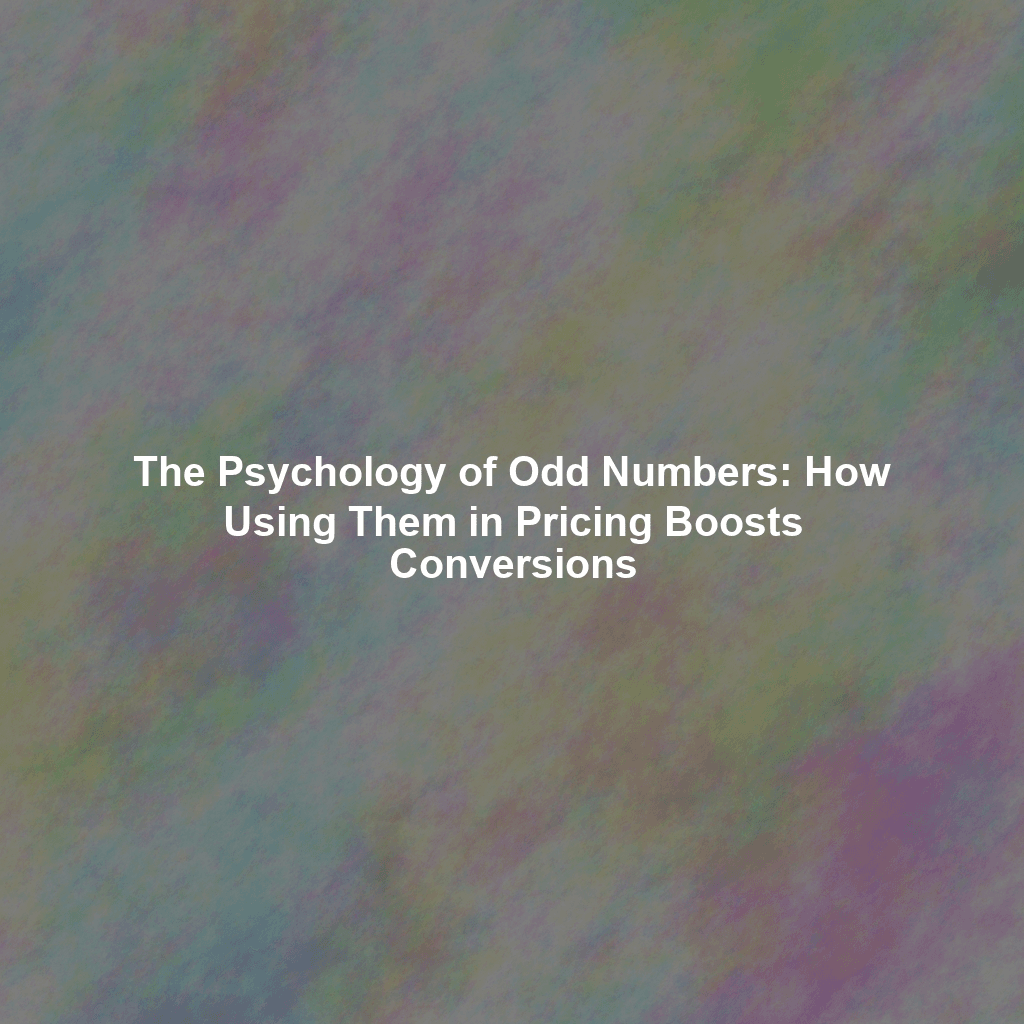In the world of marketing, we’re constantly searching for that golden nugget, that one weird trick that can unlock exponential growth. While flashy campaigns and viral videos often steal the spotlight, sometimes the most impactful strategies are surprisingly simple and rooted in human psychology. One such tactic is the use of odd number pricing. Sounds strange, right? But the data doesn’t lie. Let’s dive into the psychology behind this seemingly insignificant detail and explore how it can significantly boost your conversion rates.
The Power of the Left Digit Effect
The cornerstone of odd number pricing lies in what’s known as the “left digit effect.” Our brains tend to focus on the leftmost digit of a price and use it as a primary anchor for our perception of value. This means that even a tiny difference, like $9.99 compared to $10.00, can have a disproportionately large impact on perceived price. It’s not rational, but it’s human.
How Our Brains Process Prices
Think about it. When you see $9.99, your brain immediately registers “nine dollars,” rather than focusing on the cents. This triggers a perception of a lower price point, even though the actual difference is negligible. This cognitive bias is deeply ingrained, making odd number pricing a remarkably effective tool.
The Psychology Behind Odd Number Pricing: Why It Works
Beyond the left digit effect, several other psychological factors contribute to the success of odd number pricing:
- Charm Pricing: Prices ending in ‘9’ are often perceived as a deal or a bargain. It creates a sense of getting something for less.
- Just Below Pricing: Slightly undercutting a whole number (e.g., $19.95 instead of $20) makes the product seem significantly cheaper.
- Loss Aversion: People are more motivated to avoid a loss than to acquire an equivalent gain. A price of $29.99 feels like avoiding the “loss” of paying $30.
Real-World Examples and Data-Driven Proof
The effectiveness of odd number pricing isn’t just theoretical; it’s backed by numerous studies and real-world examples.
MIT and University of Chicago Study
A study conducted by MIT and the University of Chicago explored the effectiveness of different pricing strategies on women’s clothing. They tested three price points for a single garment: $34, $39, and $44. The result? The garment priced at $39 outsold the one priced at $34 by a significant margin, demonstrating the power of charm pricing.
Online A/B Testing Success Stories
Numerous online retailers have reported significant increases in conversion rates after implementing odd number pricing. A/B tests consistently show that products priced at $X.99 or $X.95 outperform those priced at whole dollar amounts.
The Data is Clear: Odd Numbers Boost Sales
Across various industries, the implementation of odd-number pricing has shown quantifiable positive effects. E-commerce platforms, physical retailers, and even service providers see an increase in the volume of sales. While the magnitude can vary across specific contexts, the trend is consistently upward. This suggests that the core psychological mechanism remains in effect regardless of the industry or product type.
How to Implement Odd Number Pricing Effectively
While simply slapping a ‘.99’ at the end of every price might seem like a quick fix, successful implementation requires a more nuanced approach:
- Know Your Audience: Consider your target demographic. Odd number pricing might be more effective for value-conscious consumers.
- Test and Iterate: A/B test different price points to determine what works best for your products and services.
- Context Matters: Don’t use odd number pricing indiscriminately. For luxury goods or premium services, a whole number price might convey a sense of exclusivity.
- Don’t Overdo It: Using .99 for every single price point can make your brand seem cheap or untrustworthy. Mix it up!
Beyond the .99: Variations and Creative Applications
While prices ending in ‘.99’ are the most common, experiment with other odd numbers like ‘.97’, ‘.95’, or even numbers like ‘.98’. Analyze your A/B test data and identify the number that performs best for your specific product or services.
Using Odd Numbers for Discounts
Instead of offering a 20% discount, try offering a 17% discount. The specificity can make the deal seem more authentic and carefully calculated, rather than a generic markdown.
Conclusion: Embrace the Weirdness for Growth
Odd number pricing might seem like a minor detail, but its impact on consumer perception and conversion rates is undeniable. By understanding the underlying psychology and implementing this strategy thoughtfully, you can unlock significant growth for your business. So, embrace the weirdness, test the waters, and watch your sales climb. This unconventional tactic, firmly rooted in psychological principles, proves that sometimes the most effective growth hacks are the ones that seem the strangest at first glance. It’s not just about the numbers; it’s about how those numbers are perceived, processed, and ultimately, acted upon by your potential customers.
 Skip to content
Skip to content

